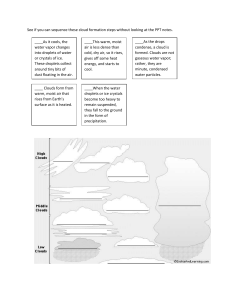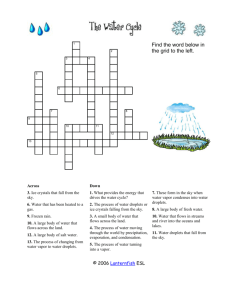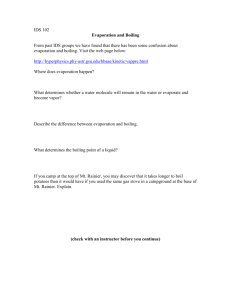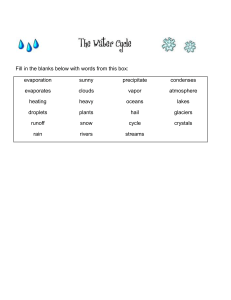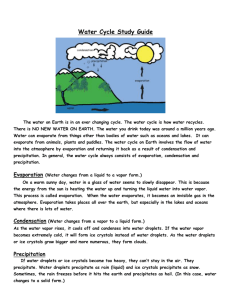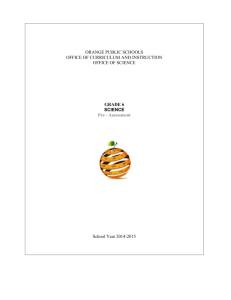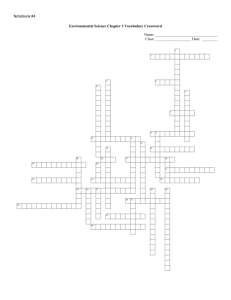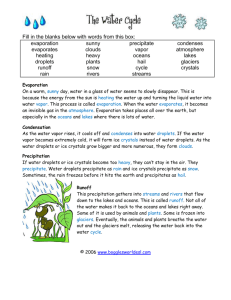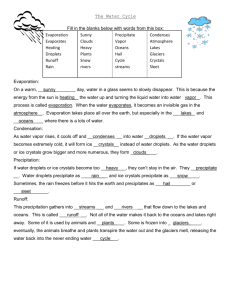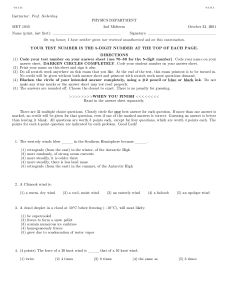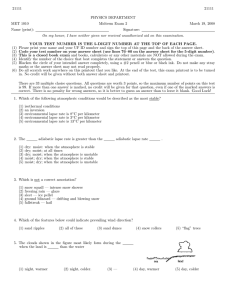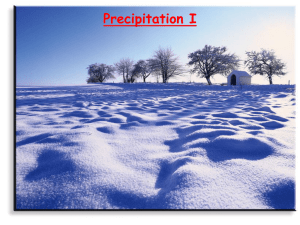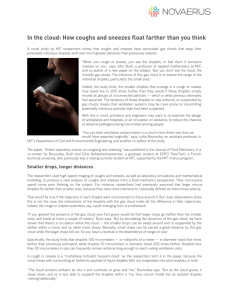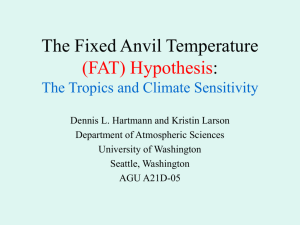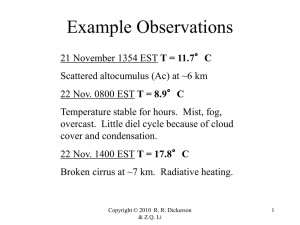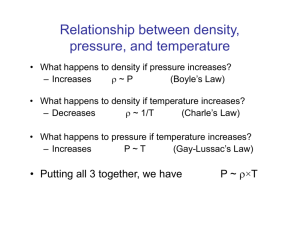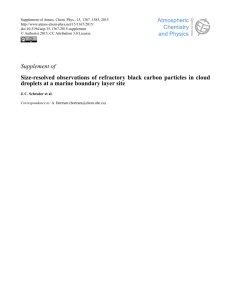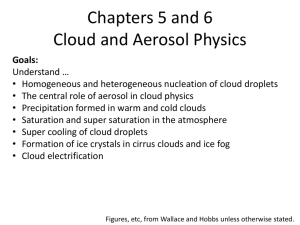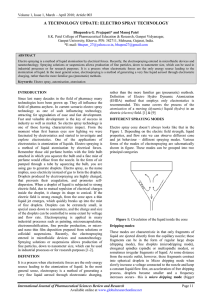Clouds & Particles
advertisement
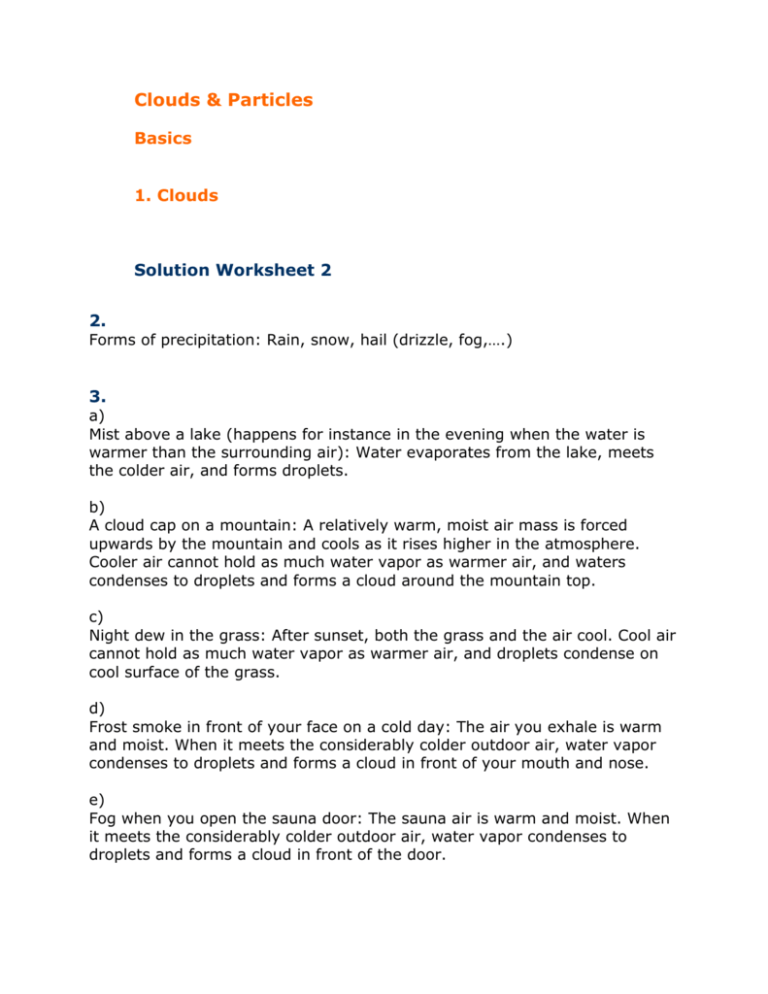
Clouds & Particles Basics 1. Clouds Solution Worksheet 2 2. Forms of precipitation: Rain, snow, hail (drizzle, fog,….) 3. a) Mist above a lake (happens for instance in the evening when the water is warmer than the surrounding air): Water evaporates from the lake, meets the colder air, and forms droplets. b) A cloud cap on a mountain: A relatively warm, moist air mass is forced upwards by the mountain and cools as it rises higher in the atmosphere. Cooler air cannot hold as much water vapor as warmer air, and waters condenses to droplets and forms a cloud around the mountain top. c) Night dew in the grass: After sunset, both the grass and the air cool. Cool air cannot hold as much water vapor as warmer air, and droplets condense on cool surface of the grass. d) Frost smoke in front of your face on a cold day: The air you exhale is warm and moist. When it meets the considerably colder outdoor air, water vapor condenses to droplets and forms a cloud in front of your mouth and nose. e) Fog when you open the sauna door: The sauna air is warm and moist. When it meets the considerably colder outdoor air, water vapor condenses to droplets and forms a cloud in front of the door.
